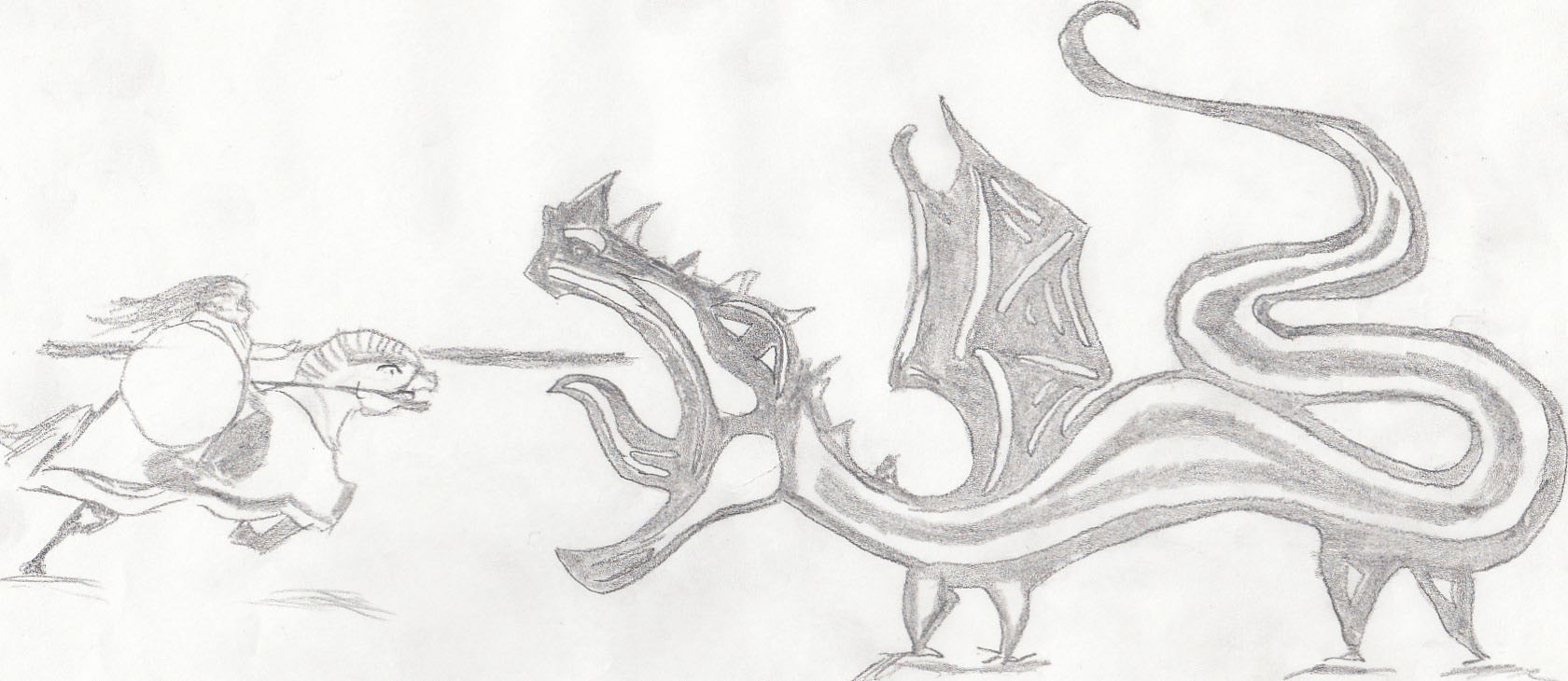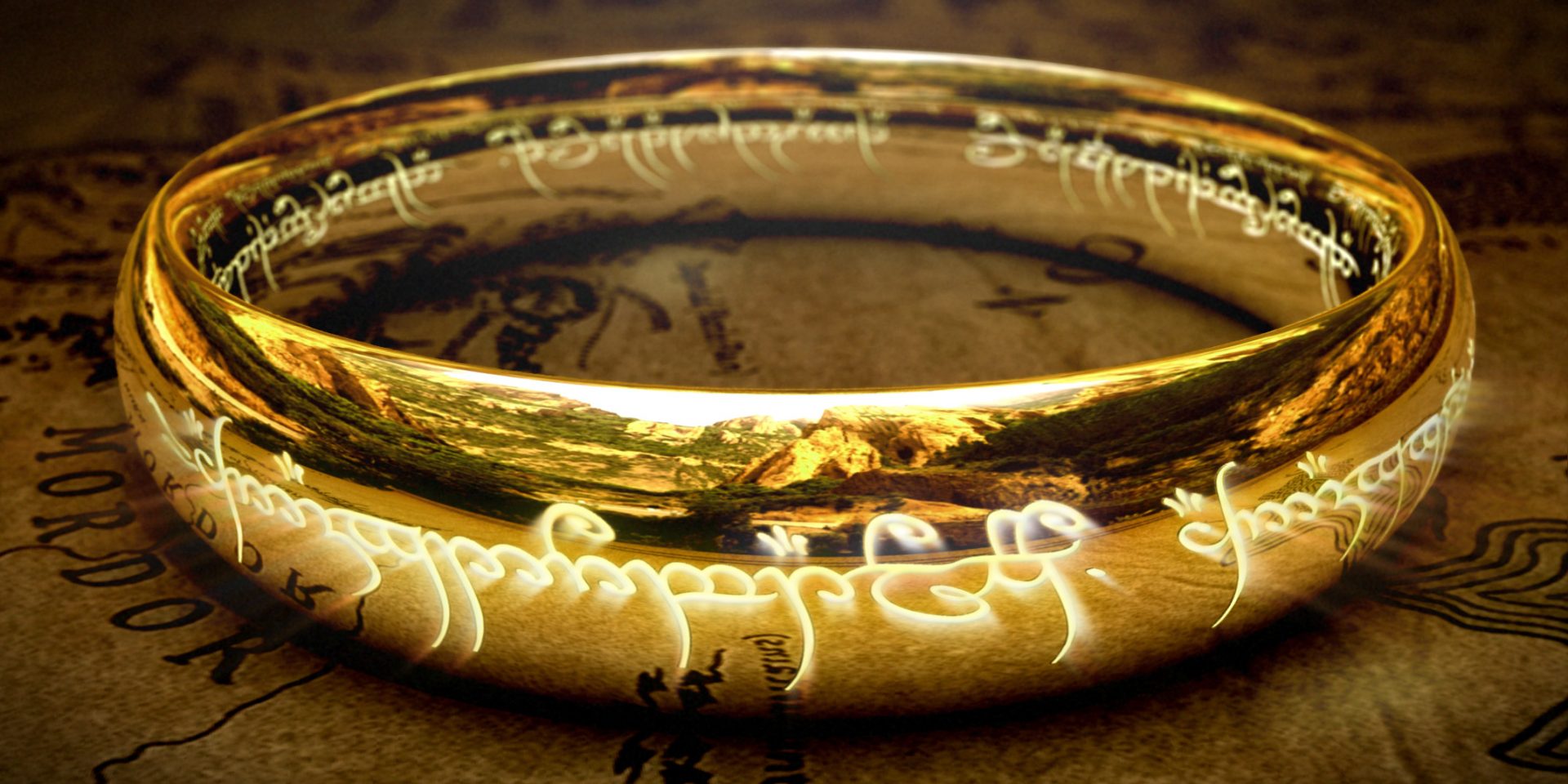The Legend of Carron's Daughter
How the Third Duke's daughter gave herself up to save the Duchy and her brother.
Jorath challenged the Duke to come out and defeat him if he could or to surrender his daughter and leave the land taking his people with him. Carron's daughter was the apple of his eye and the joy of his heart; the land and the people were his sacred trust so he resolved to fight for he knew that right was on his side. So, he donned his armour, took his battle-axe and went forth to meet Jorath in front of the town.
Jorath said to himself "The man is brave, but one man against my might stands no chance". He lowered his head to the ground so that his eyes were almost level with Caron. Carron approached him and Jorath roared a roar so loud that the walls of Morton shook and those who were watching from them were deafened. Carron raised his axe and struck at Jorath - it was a mighty blow but a dragon as great as Jorath needs a blow to be mighty even to notice it. But he noticed this one for Carron's axe was embedded in his eye. With a lunge he took hold of Carron and bit him in two. Carron's daughter wept for the loss of her father.
"Brave he was, well he struck, but futile his effort. Give me his daughter and I will let you leave the land in peace. By dawn tomorrow or I shall destroy you all."
Now, Carron's daughter was engaged to be married to the Prince of Mor and he was in Morton at that time to make arrangements for the wedding. He saw that Jorath would be half blinded by the loss of an eye and felt that an attack from the blind side at dusk would win the day. So, he rode forth at dusk and charged the resting dragon with his lance, aiming for the other eye. Jorath saw him coming and moved his head enough that the lance missed his eye but entered a nostril and stuck firm in the soft flesh there. With a swipe of his front leg Jorath pinned the prince to the ground and crushed him. Carron's daughter wept for the loss of her lover.
"Brabe he was, well he sdruk, but fudile his efford." said the dragon, for his nose was blocked by the lance though his strength was still mighty. "The daughter at dawn or your deaths."
Now, Carron had a son as well as a daughter and he resolved to ride forth at dawn, when the sun would be low and in Jorath's remaining eye. So that night he prepared his equipment, and Carron's daughter wept for the coming loss of her brother and she resolved that she would not be the cause of another death of one dear to her. As dawn grew close she went to her brother's rooms and finding hime in in prayer she knocked him out. In his armour she would pass well enough for him as the helment covered the face. So clad she rode out at dawn to meet Jorath.
"Another champion seeking glory. I shall despatch him as I did the last and then destroy Morton." sneered Jorath as she approached and lowered his head to roar. Carron's daughter pulled off her brother's helmet, lowered her brothers lance and charged at Jorath's remaining eye. Surprised by his opponent Jorath hesitated; the lance pierced his eye and entered his skull, killing him but not before Carron's daughter's charge had carried her into his jaws, which crushed her as he fell.
Historical Basis
Spread
Variations & Mutation
Cultural Reception
In Literature
Early history of the Moran Duchy
Founded in year 1, also known as -790 of the Naros Year Count the Duchy has been ruled by several related houses since it's formation. It's boundaries have ebbed and flowed with the Kingdom of Mor and with the Little Kingdoms over the years but the Duchy has retained its discrete identity. Some of it's history is set out here but details are scarce for the first few decades.Impact of the Legend
In addition to being one of the formative stories of the Duchy's foundation and the Morivan migration, the story has influenced several aspects of society in the Duchy. Unlike most of the Morivan lands, the women of the Duchy play an active part in military matters and have gained a reputation for implacable cunning when in defence. It is also the basis for the The Ladies' Ride undertaken at dawn on Midsummer's day, though this is almost certainly date of convenience rather than the actual anniversary.In popular idiom (at least out of earshot of the Ducal family and their more fervent supporters) it is also lives on in the use of the terms "Duke Carron" and "Prince of Mor" to indicate ill advised, testosterone fuelled male behaviour or being seen to be overly protective of daughters.
Why don't we know her name? I'll tell you why! It's a conspiracy by the patriarchy, that's what it is! That the legend doesn't name the prince or the brother just proves it's only the father who matters.
An Alternative Interpretation
One recent suggestion is that Jorath's incursion represents an attempt by the Taruvian groups to establish a buffer zone under a joint Taru/Morivan leadership. This would be similar to what happened further south, where the Torren culture has a clearly Taruvian element to it. This is probably unlikely given Jorath's call for the Mor to depart, but with an extensive period of oral transmission it cannot be ruled out.Oh, dad, don't be Duke Carron, he's perfectly decent and honourable in his intentions!







Its a good article, really well done. I like the change between fiction and actual historic basis, as the facts have evolved over time, especially the way you described the way the dragon of the legend stemed from the features of the attacking tribe. The only parts its lacking in is the artistic one. One or two pictures showing artistic interpretations of the legend or the area as its "supposed" to have looked in ancient times, would really break up this text wall. Maybe even show different interpretations of the legend (depends on pictures you may find). The quotes are a nice touch, but are cluttered together, moving one below the "Alternate Interpretation" would look better imo. Maybe one or two short quotes in the Variations, Cultural Reception or Literature sections? Could show how the legend is seen from different points of view, has been romantiscised or abused in various ways. Overall good article, nice myth, worth a like!
Thanks for the feedback - I've been doing some art hunting and will continue that over the weekend and will do a bit of quote tweaking when I put the pictures in.